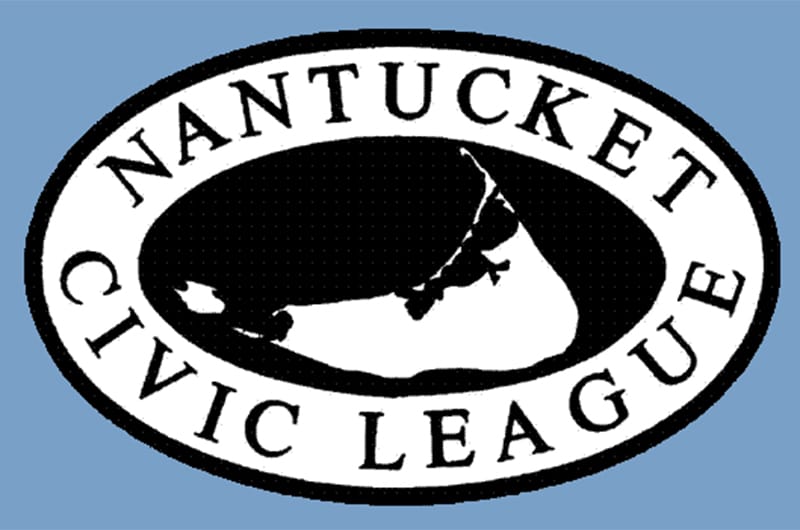~ by Frances Ruley Karttunen ~
Nantucket’s Scout camps threatened by developers! Bites to be taken out of Mill Hill Park! Something should be done! And lots has been by the Nantucket Civic League.
Recently, the Nantucket Islands Land Bank purchased Camp Taupawshas, the 5.2-acre Nantucket Girl Scout camp south of Polpis Road, thereby shielding it forever from real estate development.
Camp Richard, Nantucket’s Boy Scout camp, also faces the future threat of real estate development. Atlantic Development Corporation mounted an aggressive campaign to purchase a large portion of this area for development. That would have enriched the Cape and Islands Boy Scout Council at the expense of local scout troops and the many off-island scouts who use our island’s camp each year.
Camp Richard comprises nearly 100 acres of pinewoods south of Old South Road. It was the Nantucket Civic League that conveyed this area to our local Boy Scouts a half century ago. That conveyance included a key proviso: if the land ever ceased being used for scouting purposes, it would revert to the Nantucket Civic League.
Representatives of Atlantic Development Corporation argued that a technicality invalidated that proviso that the Cape and Islands Council of Boy Scouts was free to sell off a portion of the property. Local voices coalesced to oppose this tactic. The Nantucket Civic League, along with the Nantucket Land Council, insisted that the land donations had been to Nantucket’s local Boy Scouts.
Barnstable Superior Court Judge Gary A. Nickerson concluded that the outsider here (Cape and Islands Council) owns the land, but only so long as its use remains unchanged—as a scout camp for Nantucket’s Boy Scouts. Any change in that use would cause ownership to revert to the Nantucket Civic League.
How did the Nantucket Civic League come to have 100 acres of land to donate to Nantucket’s Boy Scouts in the first place?
It had come to the league from an earlier organization, the Nantucket Improvement Association, and the Improvement Association had received it from Josiah Sturgis. Hence the name that has carried on to this day, “the Sturgis Pines.”
Sturgis was born in 1817, moved here and married a Nantucketer, and operated Pine View Farm. In 1845, the Proprietors of the Common and Undivided Lands set off 247 acres of pinelands in three noncontiguous lots to Sturgis, but whatever he intended to do with the land, he changed his mind. Bitten by the Gold Fever that began in 1849, he gave up farming, moved his family to Martinez, California, and went into the hotel business.
In 1892, five years before his death in California, Sturgis conveyed all his 247 acres of pinelands to the Improvement Association, writing to its members, “I hope you enjoy as much pleasure in receiving and caring for the property as I do in relinquishing it into your care.”
By 1904, when the Nantucket Civic League was incorporated, the Improvement Association was moribund, and the two organizations, whose membership lists overlapped, eventually merged. As part of that merger, finally accomplished in 1912, the deed to the Sturgis Pines was delivered to the Civic League.
The League held other property as well, namely Mill Hill Park. In 1890 builder Charles H. Robinson and Captain Henry Coleman requested that the Proprietors of the Common and Undivided Lands set off land adjacent to the Old Mill to Captain Coleman, aiming to transfer the deed to the Improvement Association, which would then protect and maintain the property. This land, too, came to the Civic League as part of the merger with the Improvement Association. In 1926, developer Franklin E. Smith, who had acquired controlling shares in the Proprietary, challenged the deed to the Civic League, which he had himself drafted at the time of the 1912 transfer. The Civic League rose to the occasion by raising funds to buy back from Smith “the only part of the property suitable for park purposes with no reversion clause. It is always to be ours but must only be used as a park.”
In 1953, it was proposed that the Civic League sell Mill Hill Park for construction of a new Nantucket Cottage Hospital building. The clause about the land being used solely as parkland nipped this proposal in the bud. In 1962, however, after half a century of hard work to maintain and defend Mill Hill Park, and faced with overwhelming costs to continue to care for it, the Civic League made a gift of the park to the Town of Nantucket. This did not halt efforts to detach pieces of the park for development, but public opinion has stood firmly against it.
A third material gift of the Nantucket Civic League has never been challenged. In December 1943, the Civic League unveiled a Roll of Honor adjacent to the Sanford House on Federal Street listing the names of Nantucketers who served in World War II. By October of 1944, the monument had to be enlarged to add more names.
On May 6, 1946, the community gathered before the Role of Honor to observe VE Day, and memorial gatherings have continued there ever since. The monument has been rebuilt and enlarged to accommodate the names of those who served in the Korean War, the Vietnam War, and subsequent actions. The venerable Sanford House was demolished for the construction of the Town Building. The land on which the Roll of Honor stands remains sacred ground to this day.
You can learn more about the many contributions of the Nantucket Civic League to our community in Something Should Be Done: A History of the Nantucket Civic League by Frances Ruley Karttunen, available at local book sellers and on-line.



